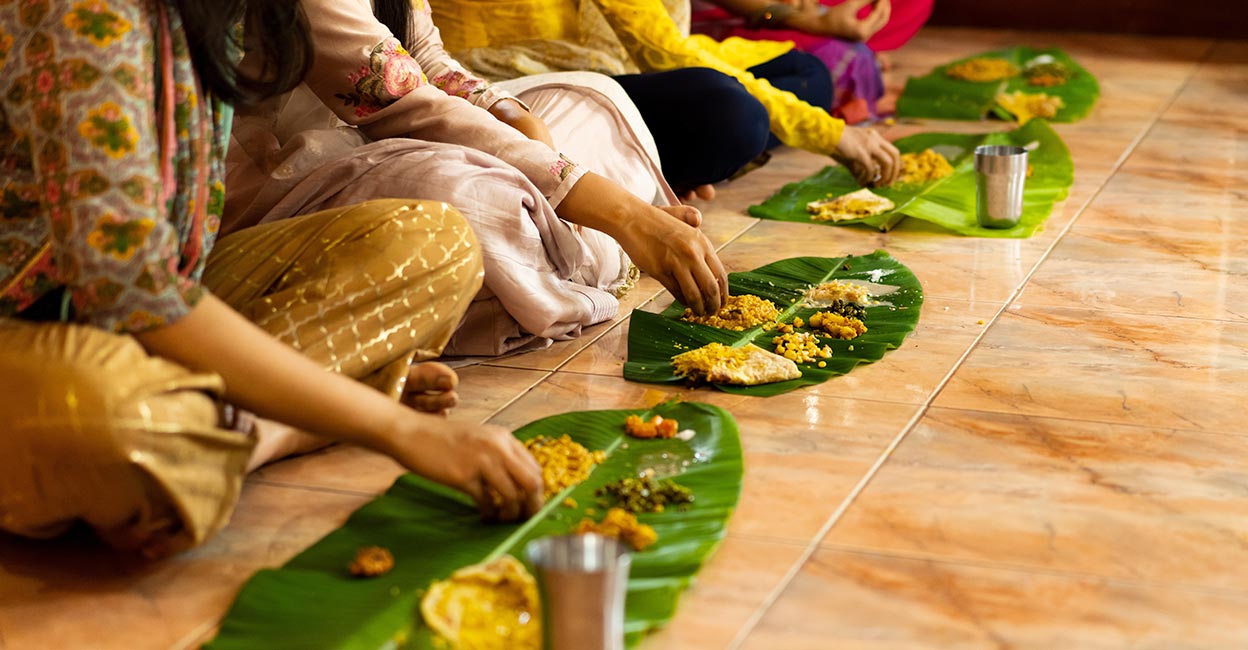Inwards or outwards? How to fold a banana leaf after Onam sadya – The Kerala way

Mail This Article
After enjoying a grand sadya, whether Onam, Vishu, or any other celebration, folding the banana leaf is more than just a way to clear the table—it's a meaningful gesture. Depending on the occasion, the direction in which you fold your banana leaf can symbolise satisfaction, appreciation, or even solemnity. Here's how to follow this custom the Kerala way.
Folding the leaf away from you
In Kerala, folding the banana leaf away from you after the meal is the standard way to show that you are satisfied and appreciate the meal. This is the most polite and widely accepted gesture to express that you enjoyed the sadya and the hospitality.
Folding the leaf outward ensures that any leftover liquids or food stay contained, preventing spills. It also makes it easier for hosts or servers to pick up and dispose of the leaf. This fold is commonly seen at public or festive gatherings outside the home.

Folding the leaf towards you
In Kerala, folding the banana leaf towards you after a meal often symbolises dissatisfaction or the fact that you did not enjoy the meal. In Tamil Nadu, however, folding the leaf towards you holds a different meaning—at weddings and joyful celebrations, it indicates that you appreciated the meal and wish to attend similar future events.
During sad occasions, such as funerals, the leaf is folded away to signify that you don't wish to return under such circumstances.
Home vs public sadya
In some parts of Kerala, there's an added nuance: at home, people may fold the leaf inward, while at public or outside sadya events, it is customary to fold it outward. This reflects different levels of personal connection to the meal and the setting.
Practical tips for eating a sadya
- Cleaning the leaf: Before starting the meal, sprinkle water on the banana leaf and wipe it gently to ensure cleanliness.
- Position the leaf correctly: Positioning the leaf is crucial for maintaining the serving and eating order in a sadya. Make sure the narrow end of the banana leaf is on your left and the wider part on your right. This is the traditional orientation for serving and eating. This makes it easy for those serving at the sadya to follow the correct position of each dish, starting with pappadam, banana, chips, sarkara varatti, and pickles; by the time they reach the right broader end of the leaf, it will be major side dishes like thoran, avial, etc.
- Use your right hand: Sadya is traditionally eaten with the right hand, without utensils. Main courses are served on the bottom half of the banana leaf, closest to you, while side dishes are placed on the top half. If you are a lefty, don't fret; use your dominant hand. At the end of the day, your host would only want you to enjoy the sadya they prepared.
- Eating order: Start with side dishes, moving from left to right. You begin with a sweet dish (often a small dessert or sweet snack) on the left, followed by spicy condiments and vegetables, and finally end with a dessert on the right.


